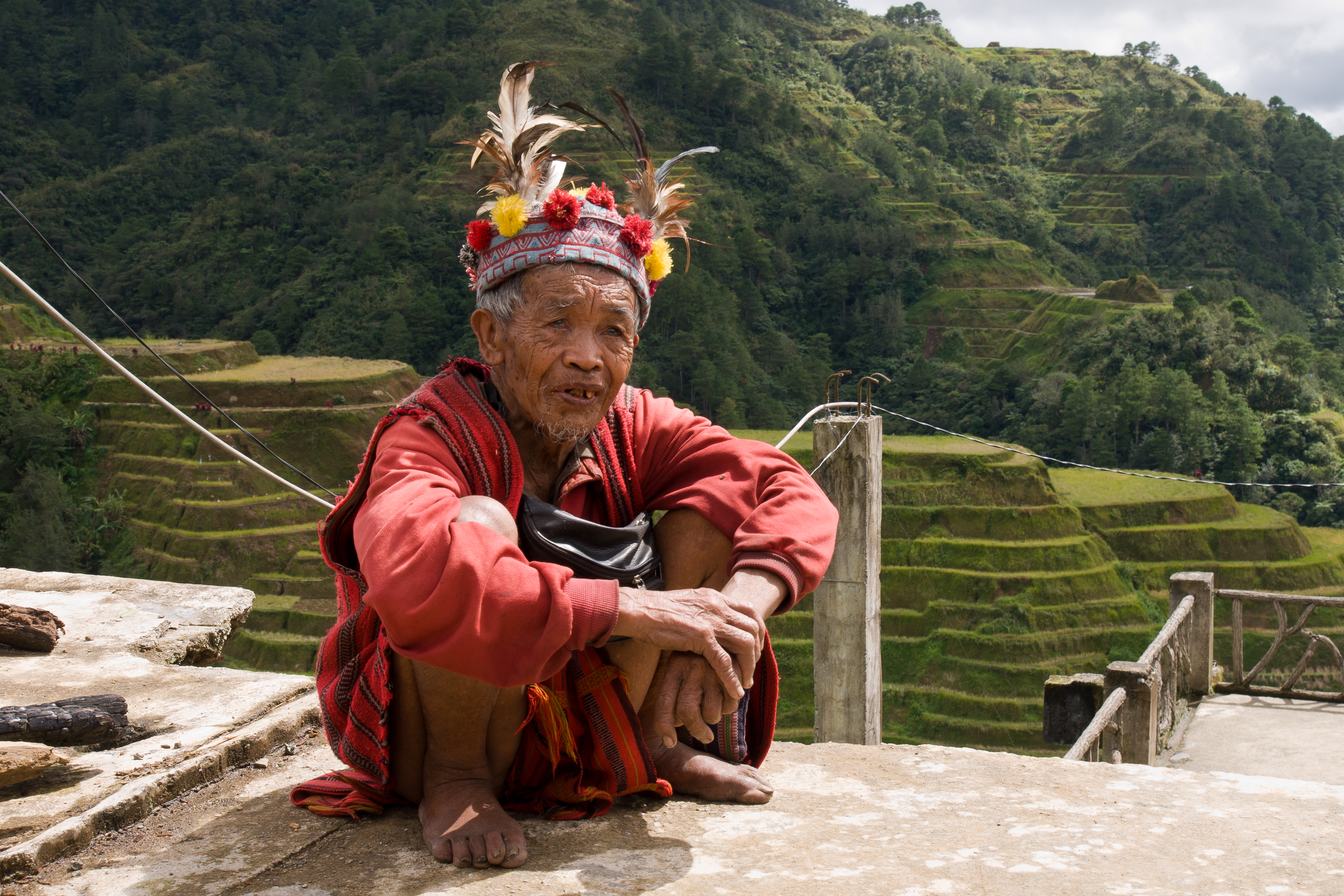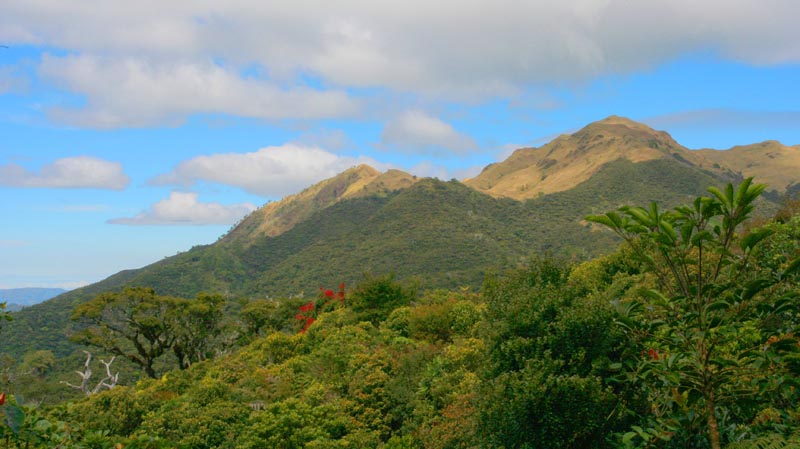|
Ifugao
Ifugao, officially the Province of Ifugao (; ), is a landlocked province of the Philippines in the Cordillera Administrative Region in Luzon. Its capital is Lagawe and it borders Benguet to the west, Mountain Province to the north, Isabela to the east, and Nueva Vizcaya to the south. The Rice Terraces of the Philippine Cordilleras and Banaue Rice Terraces are the main tourist attractions in the province. These terraces are believed to have been hand-carved into the mountains 2,000 years ago to plant rice. However, recent research by carbon dating suggests that they were built much later. In 1995, the Rice Terraces of the Philippine Cordilleras were declared as a UNESCO World Heritage Site. In 2008 and 2015, the ''Hudhud chants of the Ifugao'' and the '' Punnuk ( Tugging rituals and games)'' were inscribed in the UNESCO Intangible Cultural Heritage Lists. Etymology Ifugao is named after the term ''i-pugo'' (''"i"'' rom/peopleand ''pugo'' ill, which translates to ''pe ... [...More Info...] [...Related Items...] OR: [Wikipedia] [Google] [Baidu] |
List Of Barangays In Ifugao
The Philippine province of Ifugao has 176 barangays comprising its 11 municipalities. Barangays References {{Ifugao Ifugao Ifugao, officially the Province of Ifugao (; ), is a landlocked province of the Philippines in the Cordillera Administrative Region in Luzon. Its capital is Lagawe and it borders Benguet to the west, Mountain Province to the north, Isabela t ... Populated places in Ifugao ... [...More Info...] [...Related Items...] OR: [Wikipedia] [Google] [Baidu] |
Ifugao People
The Ifugao people are the ethnic group inhabiting Ifugao province in the Philippines. They live in the municipalities of Lagawe (capital of Ifugao), Aguinaldo, Alfonso Lista, Asipulo, Banaue, Hingyon, Hungduan, Kiangan, Lamut, Mayoyao, and Tinoc. The province is one of the smallest provinces in the Philippines with an area of only , or about 0.8% of the total Philippine land area. In 1995, the population of the Ifugaos was 131,635. Although most of them are still in Ifugao province, some have moved to Baguio, where they work as woodcarvers, and to other parts of the Cordillera Region. Demonym The term ''Ifugao'' comes from ''ipugo'', which means "earth people", "mortals" or "humans", as distinguished from spirits and deities. It also means "from the hill", as ''pugo'' means hill. The term ''Igorot'' or ''Ygolote'' was the term used by the Spanish for mountain people. The Ifugaos, however, prefer the name ''Ifugao''. History Henry Otley Beyer thought the Ifugao ... [...More Info...] [...Related Items...] OR: [Wikipedia] [Google] [Baidu] |
Rice Terraces Of The Philippine Cordilleras
The Rice Terraces of the Philippine Cordilleras are a World Heritage Site consisting of a complex of Terrace (earthworks), rice terraces on the island of Luzon in the Philippines. They were inscribed on the World Heritage Site, UNESCO World Heritage List in 1995, the first-ever property to be included in the cultural landscape category of the World Heritage List. This inscription has five sites: Banaue Rice Terraces, the Batad Rice Terraces and Bangaan Rice Terraces (both in Banaue, Ifugao, Banaue), Mayoyao Rice Terraces (in Mayoyao, Ifugao, Mayoyao), Hungduan Rice Terraces (in Hungduan, Ifugao, Hungduan) and Nagacadan Rice Terraces (in Kiangan, Ifugao, Kiangan), all in Ifugao Province. The Ifugao Rice Terraces reach a higher altitude and were built on steeper slopes than many other terraces. The Ifugao complex of stone or mud walls and the careful carving of the natural contours of hills and mountains combine to make terraced pond fields, coupled with the development of ... [...More Info...] [...Related Items...] OR: [Wikipedia] [Google] [Baidu] |
Banaue Rice Terraces
The Banaue Rice Terraces () are terraces that were carved into the mountains of Banaue, Ifugao, in the Philippines, by the ancestors of the Igorot people. The terraces were built with minimal equipment, largely by hand. The terraces are located approximately above sea level. These are fed by an ancient irrigation system from the rainforests above the terraces. Locals up to this day still plant rice and vegetables on the terraces, although more and more younger Ifugaos do not find farming appealing, often opting for the more lucrative hospitality industry generated by the terraces. The result is the gradual erosion of the characteristic "steps", which require constant reconstruction and care. In 2010, a further problem encountered was drought, with the terraces drying up completely in March of that year. Anthropologist Otley Beyer has estimated that the terraces are over 2000 years old, but several researchers dispute this and contend that they were built much later. Nev ... [...More Info...] [...Related Items...] OR: [Wikipedia] [Google] [Baidu] |
Ifugao Language
Ifugao or Batad is a Malayo-Polynesian language spoken in the northern valleys of Ifugao, Philippines. It is a member of the Northern Luzon subfamily and is closely related to the Bontoc and Kankanaey languages. It is a dialect continuum, and its four main varieties—such as Tuwali—are sometimes considered separate languages. Loanwords from other languages, such as Ilokano, are replacing some older terminology. Dialects ''Ethnologue'' reports the following locations for each of the four Ifugao languages. *Amganad Ifugao: spoken in Hungduan and Banaue municipalities of Ifugao Province, and into southwestern Mountain Province. 27,100 speakers as of 2000. Dialects are Burnay Ifugao and Banaue Ifugao. *Batad Ifugao (Ayangan Ifugao): spoken in central Ifugao Province. There are also some speakers in Isabela Province, on the eastern shore of the Magat reservoir. 10,100 speakers as of 2002. Dialects include Ducligan Ifugao. *Mayoyao Ifugao (Mayaoyaw): spoken in Ifugao Pro ... [...More Info...] [...Related Items...] OR: [Wikipedia] [Google] [Baidu] |
Ifugao Provincial Board
The Ifugao Provincial Board is the Sangguniang Panlalawigan (provincial legislature) of the Philippine province of Ifugao. The members are elected via plurality-at-large voting: the province is divided into two districts, each having four seats. A voter votes up to four names, with the top four candidates per district being elected. The vice governor is the ''ex officio'' presiding officer, and only votes to break ties. The vice governor is elected via the plurality voting system province-wide. Aside from the regular members, the board also includes the provincial federation presidents of the Liga ng mga Barangay (ABC, from its old name "Association of Barangay Captains"), the Sangguniang Kabataan (SK, youth councils) and the Philippine Councilors League (PCL). Apportionment The districts used in appropriation of members is not coextensive with the legislative district of Ifugao; unlike congressional representation which is at-large, Ifugao is divided into two districts for ... [...More Info...] [...Related Items...] OR: [Wikipedia] [Google] [Baidu] |
Batad, Ifugao
Banaue (or alternatively spelled as Banawe) , officially the Municipality of Banaue ( Ilocano: ''Ili ti Banaue'', Tagalog: ''Bayan ng Banaue''), is a municipality in the province of Ifugao, Philippines. According to the 2020 census, it has a population of 20,652 people. It is the site of a UNESCO World Heritage Site, the Batad Rice Terraces and Bangaan Rice Terraces. Etymology Banaue is the Spanish spelling of Bannawor, the ''sitio'' which once hosted the Spanish local seat of government (now part of the ''poblacion'' area of the municipality). The name later extended to the entire municipality. The ''sitio'' was named after (also spelled ), the local Tuwali Ifugao common name for '' Hirundapus celebensis'', a species of swift. History Geography Banaue is situated from the provincial capital Lagawe, and from the country's capital city of Manila. Barangays Banaue is politically subdivided into 18 barangays. Each barangay consists of puroks and some have sitios. ... [...More Info...] [...Related Items...] OR: [Wikipedia] [Google] [Baidu] |
Alfonso Lista
Alfonso Lista, formerly known as Potia, officially the Municipality of Lista is a municipality in the province of Ifugao, Philippines. According to the 2020 census, it has a population of 34,061 people. History Potia was created as the municipal district by virtue of Republic Act (RA) No. 1222 on 11 May 1955, from the barrios of Potia, Dolowog, San Juan, San Quintin, Cabicalan, Pinto, Busilac, Santa Maria, and Namillangan in the municipal district of Mayoyao; the seat of government then was designated at Barrio Potia. Originally called Mun-uupag ("bubbles of foam") by the Ifugao natives, Potia was derived from the term ''Putiak'', a phenomenon wherein plants and flowers in the area opened their pods as they dried and cracked open. The administration of President Sergio Osmeña annexed the area presently composed of Alfonso Lista to present-day San Mateo, Isabela. However, due to opposition by local settlers in the area, a major part of the area was later transferred to Mayoy ... [...More Info...] [...Related Items...] OR: [Wikipedia] [Google] [Baidu] |
Legislative District Of Ifugao
The legislative districts of Ifugao are the representations of the province of Ifugao in the various national legislatures of the Philippines. The province is currently represented in the lower house of the Congress of the Philippines through its lone congressional district. History In 1917 the undivided Mountain Province, of which Ifugao was a component sub-province, was provided representation in the Philippine Legislature. Pursuant to the Revised Administrative Code (Act No. 2711) enacted on March 10, 1917, the non-Christian-majority areas of the Philippines, which then included the Mountain Province, were to be collectively represented in the legislature's upper house by two senators from the 12th senatorial district, both appointed by the Governor-General. Three assembly members, also appointed by the Governor-General, were to represent the Mountain Province and the chartered city of Baguio in the lower house as a single at-large district. The residents of Ifugao and ... [...More Info...] [...Related Items...] OR: [Wikipedia] [Google] [Baidu] |
Tuwali Language
Tuwali language is a native language indigenous to Ifugao Ifugao, officially the Province of Ifugao (; ), is a landlocked province of the Philippines in the Cordillera Administrative Region in Luzon. Its capital is Lagawe and it borders Benguet to the west, Mountain Province to the north, Isabela t .... It is mainly spoken in the whole province. Its different varieties distinguish the municipality. Kiangan is the oldest town in the province. It derives its name from Kiangan, an ancient village near the bank of the Ibulao River across the Lagawe valley. References Further reading * External linksOnline version of Hohulin and Hohulin's (2014) dictionary and grammar sketch hosted by SIL International Central Luzon languages Languages of Ifugao {{Philippine-lang-stub ... [...More Info...] [...Related Items...] OR: [Wikipedia] [Google] [Baidu] |
Mount Pulag
Mount Pulag (; ) is Luzon's highest peak at above sea level, List of mountains in the Philippines, third-highest mountain in the Philippines, and the List of islands by highest point, 26th-highest peak of an island on Earth. It is List of Ultras of the Philippines, second-most prominent mountain in the Philippines. Located on the triple border of the Provinces of the Philippines, provinces of Benguet, Ifugao, and Nueva Vizcaya, the borders meet at the mountain's peak. Mount Pulag is third highest next to Mount Apo and Mount Dulang-dulang. Mount Pulag is famous for its "sea of clouds" and its exceptional view of the Milky Way, Milky Way Galaxy at dawn, which has attracted many tourists who wish to see the "other-worldly" scenery. The entire mountain is believed to be the home to the ''tinmongao'' spirits and is the sacred resting ground of the souls of the Ibaloi people and other ethnic peoples in the area. History The Ibaloi people of Benguet mummify their dead and house t ... [...More Info...] [...Related Items...] OR: [Wikipedia] [Google] [Baidu] |





